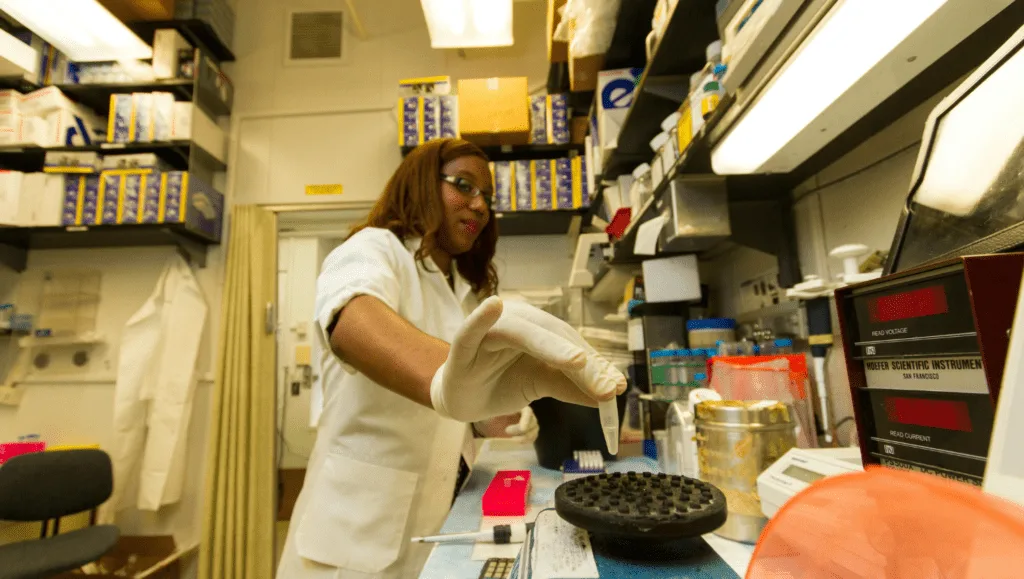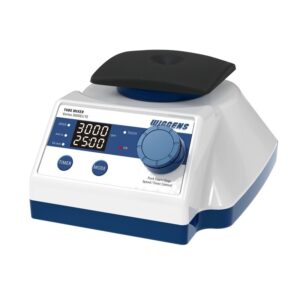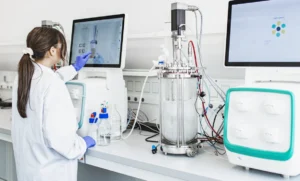A vortex mixer is an essential tool for laboratories in South Africa, offering rapid and efficient mixing of samples in test tubes, microplates, and other small containers. These compact devices generate a circular motion that quickly agitates liquid samples, ensuring uniform mixing.
Despite their simple design, selecting the right vortex mixer requires careful consideration of factors such as speed control, tube compatibility, and available attachments. This article explores key features, helping you choose the best vortex mixer for your laboratory applications.
What is a Vortex Mixer and How is it Used?
Commonly used in life sciences, chemistry, and clinical laboratories, vortex mixers perform tasks such as:
- Re-suspending cells or pellets
- Mixing reagents, solutions, and samples
- Dissolving powders into liquids
- Supporting enzymatic and chemical reactions requiring agitation
While many vortex mixers look similar, differences in speed settings, tube compatibility, and available accessories can significantly impact their efficiency.
Choosing the Right Mixing Attachment
An often-overlooked factor when selecting a vortex mixer is its compatibility with various sample containers. The right mixing top enhances efficiency and prevents sample loss.
Types of Vortex Mixer Attachments
- Standard Cup Head – Ideal for single tubes (1.5 mL, 15 mL, or 50 mL centrifuge tubes). Best for quick, intermittent mixing.
- Universal Platform Head – Holds multiple tubes simultaneously, making it perfect for high-throughput workflows.
- Foam Inserts for Microplates & PCR Tubes – Allows efficient mixing of multiple wells at once. Commonly used in molecular biology and PCR preparation.
- Flat Top for Beakers & Flasks – Provides gentle agitation for larger liquid volumes.
Why the Right Attachment Matters
- Ensures effective sample mixing
- Prevents spills or tube damage
- Improves workflow efficiency
Fixed vs. Variable Speed: Which is Best?
Speed control is a crucial feature in vortex mixers, influencing how samples are agitated.
- Fixed Speed Mixers – Operate at a single pre-set speed (typically around 2500 RPM). Suitable for routine mixing tasks.
- Variable Speed Mixers – Allow users to adjust the speed for gentle or vigorous agitation, making them ideal for diverse applications.
Why Speed Control is Important
- High speeds (2000+ RPM) accelerate mixing of viscous solutions
- Low speeds (below 1000 RPM) minimize frothing and prevent excessive agitation
For laboratories requiring flexibility, a variable speed vortex mixer is a better investment.
Touch vs. Continuous Mode: Selecting the Right Operation Style
A vortex mixer typically operates in one of two modes:
- Touch (Pulse) Mode – Activates when the tube is pressed against the mixing head, suitable for quick, intermittent use.
- Continuous Mode – Runs without user intervention, perfect for applications requiring prolonged agitation.
Choosing between these modes depends on workflow demands. High-throughput labs benefit from continuous operation, while intermittent users may prefer touch activation.
Stability & Durability: Features to Look For
When investing in a vortex mixer, consider:
- Heavy Base Design – Prevents excessive vibrations and movement during operation.
- Chemical-Resistant Housing – Protects against harsh cleaning agents and chemical spills.
- Low Noise Operation – Ensures minimal disruption in laboratory settings.
Expandability & Accessories
Some vortex mixers come with additional accessories to enhance functionality:
- Tube racks for hands-free mixing
- Interchangeable foam inserts for different tube sizes
- Digital displays for precise speed control
Investing in a model with expandable features increases long-term usability and efficiency.
Where to Buy a Reliable Vortex Mixer in South Africa
Apex Scientific is a trusted laboratory equipment supplier in South Africa, offering a range of high-quality vortex mixers. We supply top brands, including Wiggens, known for their durable and efficient laboratory instruments.
Browse our selection of vortex mixers to find the best fit for your laboratory.
Conclusion: Selecting the Best Vortex Mixer for Your Lab
When choosing a vortex mixer, consider:
Tube compatibility – Ensure the right attachments for your sample types
- Speed control – Fixed vs. variable speed options
- Operation mode – Touch vs. continuous mixing
- Stability and durability – Heavy base and chemical-resistant housing
- Accessories – Expandability for greater flexibility
A well-chosen vortex mixer enhances workflow efficiency and ensures consistent sample preparation. Contact Apex Scientific today for expert advice and high-quality laboratory equipment in South Africa.





